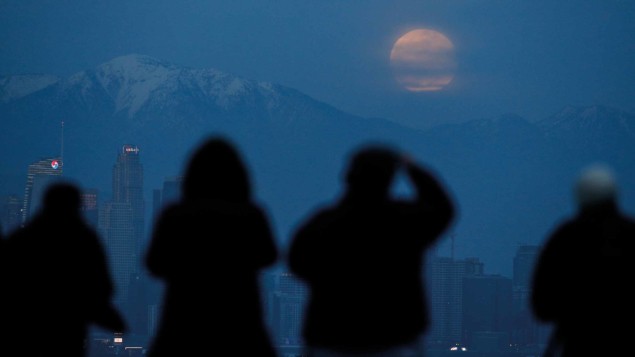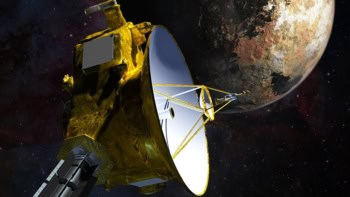Sarah Cruddas reviews The Moon: a History for the Future by Oliver Morton

At a time when so many of us will be thinking about our nearest celestial neighbour, given the fact that we first set foot on it 50 years ago, The Moon: a History for the Future by Oliver Morton provides a timely, powerful and at times emotional account of the story of our natural satellite. It is clear that a tremendous amount of work and research has gone into Morton’s book, which comprehensively charts every aspect of the history of the Moon. You’ll find human observations; how the Moon formed; the Apollo missions, as well as future missions; mining; and even topics such as what role the Moon, or a similar substantial satellite, could play in the existence of intelligent life.
While space may contain many worlds that are more exciting than the Moon to explore, Morton’s words help you to see the Moon from a fresh perspective – to truly understand the impact it has had on many aspects of our history, and the value it could hold in our future. The book also includes a mix of short snappy chapters – covering topics such as the lunar surface, phases and orbit under headings such as “Reflections”, “Boundaries” and “Reasons”– that work nicely to break up longer chapters.
Cash in the attic
One of the greatest analogies Morton uses to describe our Moon is that it is akin to Earth’s attic – “No-one quite knows what is there, and a lot of it is probably junk, but there is more of it than you think and it’s older too. There might be valuable oddities. There might be precious heirlooms.” Morton also reminds the reader of times when we may have taken our celestial companion for granted. For while it has been a constant presence by our side, we often don’t think as much about the impact of the Moon on life here on Earth. Of course, this is now changing thanks to private companies taking an interest in the Moon, and the rise of new space players such as China and India.
There is a healthy dose of science fiction merged within the text, with nods to the likes of Carl Sagan and Robert Heinlein, as well as references to the visionary physicist Gerard O’Neill, and his roadmap for our space future, in his The High Frontier: Human Colonies in Space. These and many other visionaries had a huge impact on space exploration, and the inclusion of such experts helps to add to the inspiration, and also frustration, which can be drawn from human exploration of the Moon.
The writing at times is wonderfully engaging, and for some chapters I found it impossible to put down. The book is also right up to date, given how fast things within the commercial space industry can sometimes move. In the latter half of the text, Morton’s focus moves to returning humans to the Moon. Inevitably, the exact details of how this will happen are likely to change but Morton looks at many of the planned future lunar missions. They include private commercial companies such as Astrobotic; the European Space Agency’s plans for a Moon Village (a collaboration of public and private ventures); as well as SpaceX’s Dear Moon project, which aims to send Japanese billionaire Yusaku Maezawa and a crew of artists to orbit around the Moon. However, since publication, NASA has announced details of its Artemis Lunar Program – which aims to send men, and for the first time, women, to the surface of the Moon by 2024. And there will likely be further developments that cannot be predicted.
The Moon might particularly find a place in the hearts of the so-called “orphans of Apollo”, who Morton references on several occasions. These are people who remember the Apollo Moon landings, and who were inspired by them to become scientists or engineers, to perhaps work in the space industry, but were disappointed by what happened in space post-Apollo (or rather, what didn’t happen). Morton reminds the reader, and in particular those orphans, that the space future many had expected may now finally come to fruition. Although for some, until it actually happens, the frustrations remain.
Human side
My favourite parts of the book are the excerpts of transcripts from all of the six Apollo missions that landed on the Moon. I am not ashamed to say that reading those words bought a tear to my eye. Morton’s use of these texts is a powerful reminder of the human aspect of sending astronauts to the Moon, and the impact of the words of those who walked on the lunar surface is felt by those of us back on Earth. While just 12 astronauts have so far set foot on the surface, reading the transcripts is a poignant reminder of the people behind the missions, and the inspiration that can be drawn from them.
Apollo was the first time human beings visited another world. There will never be a time when this story does not inspire awe. Even for those who work in the space industry (myself included) or those who have a strong interest in space, there is still a lot of new and interesting stuff in here. And most importantly, this book serves to make you think about the Moon with a fresh perspective.
As we look to a future where the Moon may have an ever-growing presence in human exploration of space, Morton provides us with an essential handbook of the story of this lifeless rock that remains faithfully by our side. In Morton’s own words: “more people on Earth today will walk on the Moon, than those who have walked on the Moon.”
- 2019 The Economist Books 352pp £20hb



